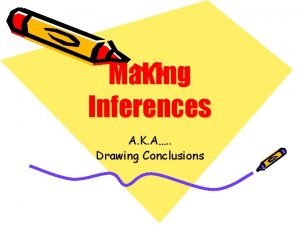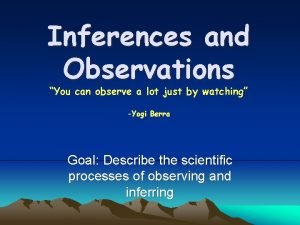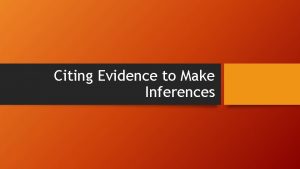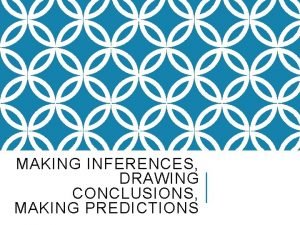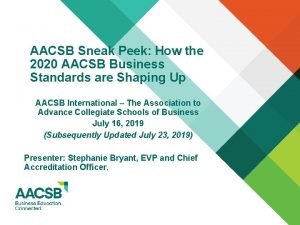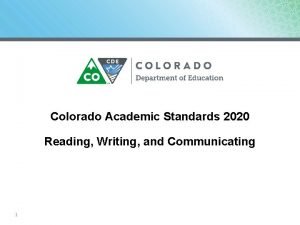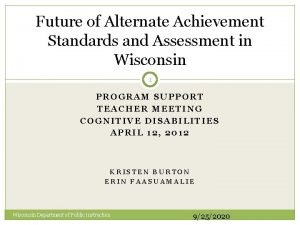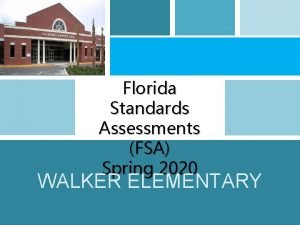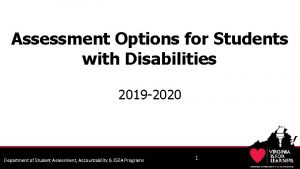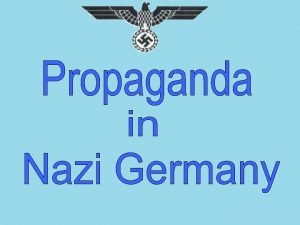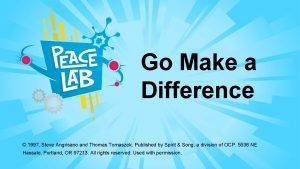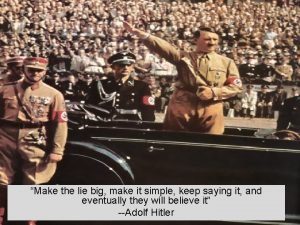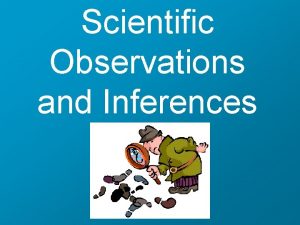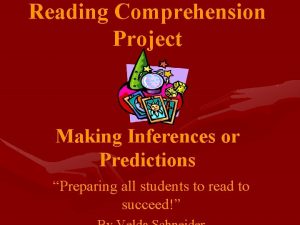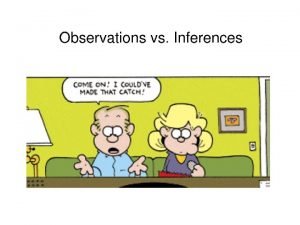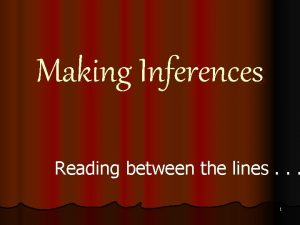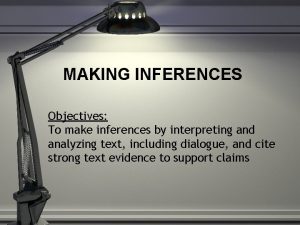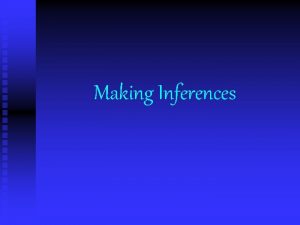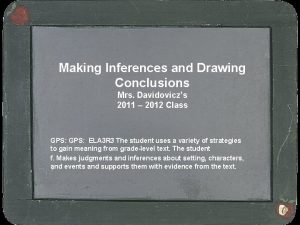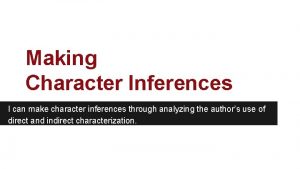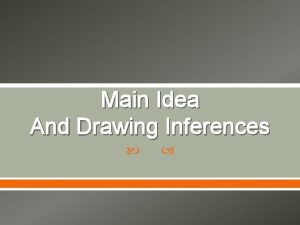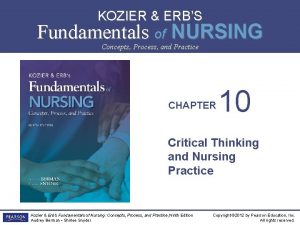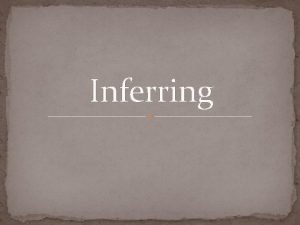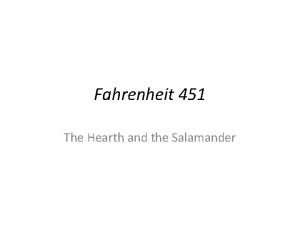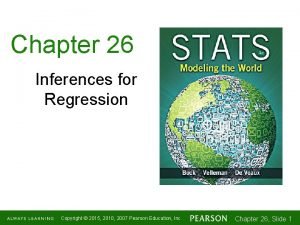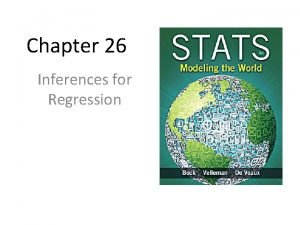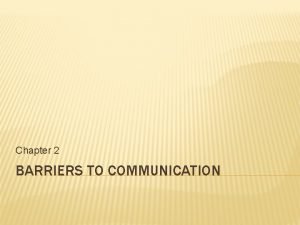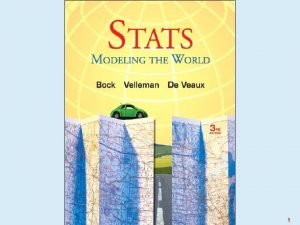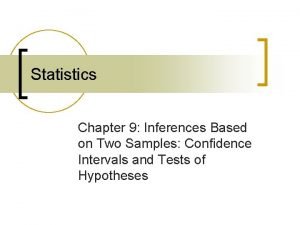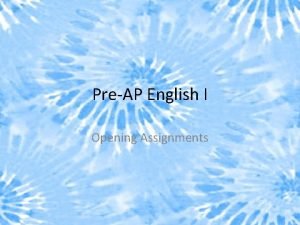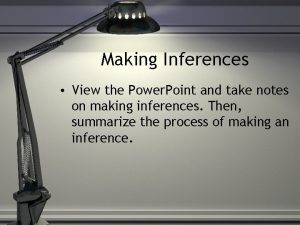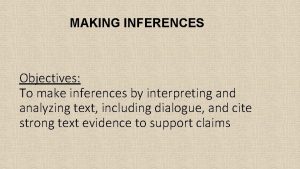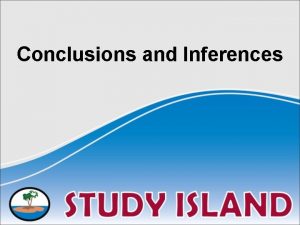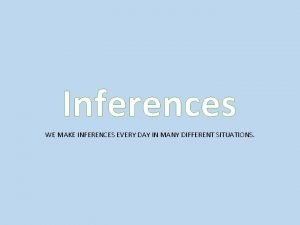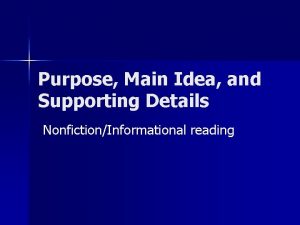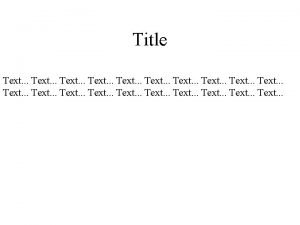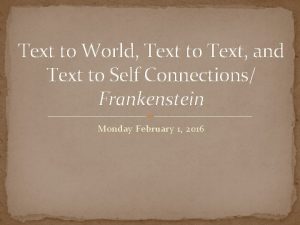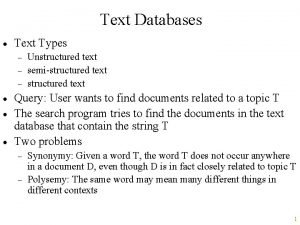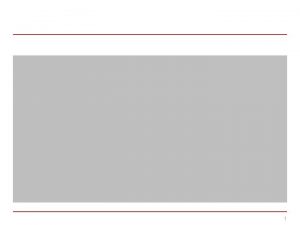NonfictionInformational Text English I 2020 Standards Make inferences



































- Slides: 35

Nonfiction/Informational Text English I 2020

Standards ● ● ● ● ● Make inferences, draw conclusions, provide evidence analyze, make inferences and draw conclusions about the author's purpose in cultural, historical, and contemporary contexts and provide evidence from the text to support their understanding analyze how words, images, graphics, and sounds work together in various forms to impact meaning. explain the controlling idea and specific purpose of an expository text and distinguish the most important from the less important details that support the author’s purpose summarize text and distinguish between a summary that captures the main ideas and elements of a text and a critique that takes a position and expresses an opinion differentiate between opinions that are substantiated and unsubstantiated in the text analyze the relevance, quality, and credibility of evidence given to support or oppose an argument for a specific audience analyze factual, quantitative, or technical data presented in multiple graphical sources compare and contrast how events are presented and information is communicated by visual images (e. g. , graphic art, illustrations, news photographs) versus non-visual texts evaluate changes in formality and tone within the same medium for specific audiences and purposes

Name the type of sentence: I walked my dog after school; therefore, she went to sleep early.

Nonfiction/Informational Texts + Media

Author’s Purpose: Reason or intent for writing.

Controlling Idea & Supporting Details: The controlling idea contains the author’s opinion about the topic- it helps the reader understand the purpose of the piece.

Opinion (substantiated vs unsubstantiated): A substantiated opinion provides proof or factual information to support one’s opinion. An unsubstantiated opinion does not provide proof.

Organizational Patterns: Chronological, compare/contrast, order of importance, sequence, spatial, cause/effect, problem/solution.

Text Features: Include all the components of a story or article that are not the main body of text. Table of contents, index, glossary, headings, bold words, sidebars, pictures and captions, and labeled diagrams.

Summary: A brief statement that only includes the main idea(s).

Critique: A detailed analysis and assessment of a written work.

Objective/Subjective: Subjective refers to personal perspectives, feelings, or opinions. Objective refers to the elimination of subjective perspectives and is based purely on hard facts.

Bias: Prejudice in favor of or against one thing, person, or group compared with another usually considered to be unfair.

Media: All media are constructions, media constructs VERSIONS of reality, audiences negotiate meaning in media, media is influenced by money, media messages contain social and political implications, media has unique aesthetic form, media is full of bias

Name the type of sentence: I need coffee to wake up in the morning.

Gabriela Cowperthwaite is a documentary filmmaker who for more than 12 years has directed, produced and written a variety of real-life stories. She has directed, written and produced for ESPN, National Geographic, Animal Planet, Discovery and History Channel, including History Channel’s “Shootout!” series, for which she and a cameraman were embedded with 300 Marines at Twentynine Palms, and “Disaster Tech, ” a documentary series about the biggest natural disasters in world history. In 2010 she co-directed City Lax: An Urban Lacrosse Story, for which Gabriela was immersed in the inner city for eight months, chronicling the lives of six youths and their families as they struggle through middle school in their gang-ridden neighbourhoods. Her most well-known work is Blackfish, which has been listed as one of the highest-grossing documentaries of all time.

An effective documentary does more than just open a window into the lives of its subjects. It informs viewers in such a way that the audience is engaged with, or drawn into, the material. The documentary must strike a balance between the information it imparts and its aesthetics in order to reinforce the film’s message. Students can “read” a documentary film, just like they read printed texts, and as they analyze informative techniques, we should pay attention to the filmmaker’s effectiveness in presenting her subject matter.

1 Awareness: Students use attentive viewing skills while watching the documentary 2 Analysis: Students judge the content/message and effectiveness of the film’s arguments/information 3 Reflection: Students think how the film’s message connects to what they already know 4 Action: Students focus new inquiries based on gaps in their understanding

Watch the Trailer for Blackfin and respond to the questions on the next slide, on lined paper. https: //youtu. be/G 93 bei. Yi. E 74

1 What techniques does the trailer use to draw you into the story? 2 What is the trailer’s intended message/agenda? Who are the “good/bad” guys? 3 What background knowledge/opinions do students bring to the movie? 4 What critical skills should be emphasized while watching the movie?

What feeling do think the photographer intended to create by this photo?

Documentary films should be realistic.

Documentary films should persuade the audience or make some political point.

Documentary film is the best film genre to push for social change.

Documentary filmmakers should not try to edit their films to make them more dramatic and entertaining.

Documentaries show reality.

Documentaries should show both sides of the story.

The Bachelor(ette) and Survivor can be considered documentaries.

Documentaries should aim for objectivity.

Documentaries should aim to revolutionize the way we think.

Editing is the most important element of making documentaries.

Name the type of sentence: I offered my jacket to my friend even though I was cold too.

Watch Blackfin It is currently available on Hulu and Amazon Prime. Email Mrs. Mc. Grath if you do not have access the movie.

Name the type of sentence: Clearly, if I don’t see a doctor, I am going to get worse.

Quiz on Tuesday Test – Monday, Feb. 10
 Text to text text to self text to world
Text to text text to self text to world Drawing conclusions meaning
Drawing conclusions meaning Observing and inferring
Observing and inferring Citing evidence to make inferences
Citing evidence to make inferences Making inferences drawing conclusions
Making inferences drawing conclusions 6 key priorities of minister of health
6 key priorities of minister of health Aacsb standards 2020
Aacsb standards 2020 Colorado reading standards 2020
Colorado reading standards 2020 Alabama alternate achievement standards 2020
Alabama alternate achievement standards 2020 Science test
Science test Vaap aligned standards of learning 2020-2021
Vaap aligned standards of learning 2020-2021 Hard standards and soft standards examples
Hard standards and soft standards examples Make the lie big make it simple
Make the lie big make it simple Go make a difference
Go make a difference Make the lie big, make it simple
Make the lie big, make it simple What are observations and inferences
What are observations and inferences Making inferences and predictions
Making inferences and predictions Inference examples for students
Inference examples for students Making inferences: reading between the lines answer key
Making inferences: reading between the lines answer key Inference objectives
Inference objectives Assumptions vs inferences
Assumptions vs inferences Drawing conclusions and making inferences powerpoint
Drawing conclusions and making inferences powerpoint Character inferences
Character inferences Draw inferences nursing
Draw inferences nursing Nursing inferences examples
Nursing inferences examples Making inferences
Making inferences List the things montag was a fool about
List the things montag was a fool about These are techniques or activities that contribute directly
These are techniques or activities that contribute directly Chapter 26 inferences for regression
Chapter 26 inferences for regression Chapter 26 inferences for regression
Chapter 26 inferences for regression Too many transfer stations are barriers in
Too many transfer stations are barriers in Chapter 27: inferences for regression
Chapter 27: inferences for regression Inferences based on two samples
Inferences based on two samples Making inferences examples
Making inferences examples Making inferences
Making inferences Making inferences powerpoint
Making inferences powerpoint

